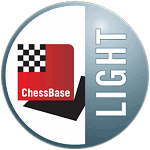
World Championship 2007 Mexico
The World Championship 2007 will take place from September 12 to 30 in the
Sheraton Centro Histórico Hotel in Mexico City. Eight players are qualified
– the tournament will be a double round robin. The prize fund is US $1.3
million.
Round six commentary by GM Mihail Marin
Leko-Anand and Aronian-Kramnik ended in draws relatively quickly. It looked
like the players had done most of their work at home. Gelfand-Morozevich featured
an interesting confrontation of different styles. White's advantage of space
and initiative prevailed over Black's stability on dark squares, but only after
a significant inaccuracy from Morozevich' part.
Playing with white, Grischuk sacrificed two pawns against Svidler and obtained
a dangerous attacking position. He increased his material investment by sacrificing
a bishop, but quickly retrieved the material by winning the queen. He retained
excellent attacking chances in mutual time trouble and, after a far from obvious
mistake from Svidler, he could have won with a simple manoeuvre. Instead, he
sacrificed a knight and only obtained a draw by perpetual.
Grischuk,A (2726) - Svidler,P (2735) [D43]
WCh Mexico City MEX (6), 19.09.2007 [Mihail Marin]
1.Nf3 d5 2.d4 Nf6 3.c4 c6 4.Nc3 e6 5.Bg5 h6 6.Bh4 dxc4 7.e4 g5 8.Bg3 b5
9.Be2 Bb7 10.h4 g4 11.Ne5 h5 12.0-0 Nbd7 13.Qc2 Nxe5 14.Bxe5 Bg7
15.Bg3!? Anand's novelty from his game against Aronian, where 15.Rad1
was played, looks convincing enough, making Grischuk's desire to deviate earlier
quite understandable.
15...Qxd4 16.Rfd1 Qc5 17.Bd6 Qb6 18.a4 a6 19.e5 Nd7
White's compensation for the sacrificed pawns is obvious. Black's king cannot
find a safe residence easily, while his pieces are more passive than White's.
20.a5!? Releasing the queenside tension might look like a concession, but
Grischuk intended to drive the enemy queen onto a more passive square before initiating
the following tactical operation.
20...Qa7 21.Ne4 c5 22.Ng5 Nxe5 23.Bxe5 Bxe5
24.Bxc4! bxc4 25.Qa4+ Kf8 26.Rd7 Bd5 27.Rd1 Bd4 28.Rxa7 Rxa7 29.b3 Kg7.
29...cxb3? would lose material to 30.Rxd4. 30.bxc4 Ba8. Optically,
Black has more than sufficient compensation for the queen. His bishops look
quite impressive, while his structure is very compact. However, his pieces are
not entirely coordinated yet, which is the type of situations when the queen
can be very dangerous. By this moment, both players were approaching sever time
trouble. 31.Qc2 g3 32.Rxd4! Black's entire stability was based on this
bishop. 32...cxd4 33.Qe2 gxf2+

34.Qxf2?! Slightly lowering the rhytm of attack. 34.Kxf2! looks more
logical for two different reasons. The king approaches the enemy passed pawn
in order to block it, while the queen remains close to the e5-square. 34...Rd8?
Black needs at least wto tempi in order to reach optimal coordination and
it is not easy to find the correct move order in time trouble. 34...Rd7 35.Qg3
Kf8; or 34...e5 35.Qg3 Kf6 would have been better tries, when it seems that
White has nothing better than force a draw by perpetual. 35.Qg3 Kf8 36.Qe5
Ke8 37.Nxe6? There is a strange coincidence regarding the way Grischuk
missed a win in the present game and in the second round against Aronian. By
making a knight move he forces a draw, when a natural queen move would have
won: 37.Qh8+! After 37...Ke7 38.Qg7 Rf8 White has 39.Nxe6! 37...fxe6 38.Qh8+
Ke7 39.Qg7+ Ke8. White cannot win because after capturing the a7-rook he
would miss a tempo to block the d-pawn witht he king. 40.Qh8+ Ke7 41.Qg7+
1/2-1/2. [Click to replay]
Leko,P (2751) - Anand,V (2792) [C78]
WCh Mexico City MEX (6), 19.09.2007 [Mihail Marin]
1.e4 e5 2.Nf3 Nc6 3.Bb5 a6 4.Ba4 Nf6 5.0-0 b5 6.Bb3 Bc5 It is refreshing
to remember that in the Ruy Lopez there are other playable lines than the Marshall
Attack. 7.c3 d6 8.a4 Rb8 9.d4 Bb6 10.Na3 0-0 11.axb5 axb5 12.Nxb5 Bg4 13.Be3
[Previously, Leko had tried 13.Bc2 Bxf3 14.gxf3 Nh5 15.Kh1 , but against
Anand he might have considered that the weakening of the kingside was not really
recomendable.] 13...exd4 14.cxd4 Nxe4 15.Qc2 Qe8 Miraculously, Black
managed to defend his pieces. White retains some initiative, but Black's better
structure allows him count with equality. 16.Ba4 Bd7 17.Rfe1 Nb4 18.Qc4 Ba5
19.Nc3 Bxa4 20.Rxa4 d5 21.Qf1 Nc6 1/2-1/2. [Click
to replay]
Aronian,L (2750) - Kramnik,V (2769) [E06]
WCh Mexico City MEX (6), 19.09.2007 [Mihail Marin]
1.d4 Nf6 2.c4 e6 3.Nf3 d5 4.g3 Be7 5.Bg2 0-0 6.0-0 dxc4 7.Qc2 a6 8.Qxc4
b5 9.Qc2 Bb7 10.Bd2 Be4 11.Qc1 Qc8
If asked which line he consideres t be the safest against the Catalan, Kramnik
would probably refuse to answer. The best method to find out hisopinion is to
play this opening against him and here is what he decided to answer today. 12.Bg5
Nbd7 13.Nbd2 Bb7 14.Nb3 a5 15.Bxf6 Bxf6 16.Nc5 Bd5 White is not sufficiently
well developed to maintain the blockade on c5. After a short phase of simplifications,
the game will end in a draw, hopefully just in time to allow Kramnik watch his
favourite match from the Champion's League. 17.e4 Bc4 18.Nxd7 Qxd7 19.Re1
Bxd4 20.Rd1 c5 21.Qc2 e5 22.Nxe5 1/2-1/2. [Click
to replay]
Gelfand,B (2733) - Morozevich,A (2758) [E17]
WCh Mexico City MEX (6), 19.09.2007 [Mihail Marin]
1.d4 Nf6 2.c4 e6 3.Nf3 b6 4.g3 Bb7 5.Bg2 Be7 6.Nc3 The development
of this knight before castling has for the first time been submitted to thorough
investigation at high level during the final Candidates' match between Karpov
and Kortschnoj, back in 1974. Playing with white, Kortschnoj managed to unearth
several interesting ideas, but suceeded in winning a game with this line only
towards the end of the match. Sadly for him, this did not change the course
of history and Karpov won the match with a minimal difference and was soon to
be proclaimed World Champion after Fischer's refusal to defend his title. 6...Ne4
7.Bd2 f5 8.d5 Bf6 9.Qc2 We can see here a first difference induced by this
move order. In the position with the castles inserted, Black could win a pawn
with ...Bxc3 followed by ...exd5, but here this is impossible because the g7-pawn
would be hanging. 9...Qe7 10.Nxe4 fxe4 11.Qxe4 Bxb2 12.Rd1 Bf6 We have
reached a strategically unbalanced position, which seems to suit both players'
style. Gelfand has obtained considerable advantage of space and some initiative,
while the b7-bishop is quite passive. Morozevich relies on the fact that after
the elimination of the b2-pawn, the c5-square has become an excellent outpost
for his knight. If in the long run his stability on dark squares will allow
him extinguish the first wave of white initiative, he might obtan a pleasant
endgame. As for the b7-bishop, it can always come back into play via a6 or (after
a preliminary ...d6) via c8-d7. 13.0-0 Na6 14.Nd4 Nc5 15.Qe3 exd5 16.cxd5
Qxe3 17.Bxe3 0-0-0 18.Rb1 Rhe8 Both sides have completed their development
and time has come for direct contacts. 19.Nb5 Threatening Bxc5, when
Black would be deprived of one of his main trumps.

19...Rxe3!? An exchange sacrifice in the style of Petrosian and Anderson.
Its main idea is to preserve the stability on dark squares. 20.fxe3 a6 21.Nd4
Re8 22.Nf5 d6 23.Rb4.

With his disrupted structure, White can hardly think about a favourable pawn
break. Therefore, his only constructive plan is to activate his pieces. The
main threat is Rg4. 23...h5?! We can suppose that Morozevich was optimistic
around this moment. If this is true, he must have forgotten that he did not
fulfill all his programmed tasks yet. He still needs to activate his light-squared
bishop. From this point of view, more consequent would have been 23...Kb8 preparing
...Bc8 and offering some indirect defence to his kingside at the same time.
24.Rg4 Bc8 25.Nxg7!? The only way to maintain the initiative. In other cases,
Black would exchange on f5, obtaining a reliable fortress on dark squares. Later,
he could consider advancing his queenside pawns gradually, which could cause
White certain problems. 25...Rg8 26.Ne6 Rxg4 In this moment we understand why
the king could not go to d8 instead of b8. 27.Rxf6 Ra4 28.Rf8 Threatening Nxc5
followed by Bh3. 28...Nd7 29.Rh8 Rxa2 White's position remains more active,
but the a- and b-pawns will start running soon. The position remains difficult
to assess. 24.g4! a5 25.Rbf4 White's kingside initiative has become very
dangerous now. 25...Rh8 26.gxh5 Rxh5 27.Rg4 Rh7

28.Nxg7! An elegant tactical blow, crowning White's previous play and
taking advantage of the fact that the b7-bishop is a mere spectator yet. 28...Rxg7.
Or 28...Bxg7 29.Rf7. 29.Bh3! Rxg4+ 30.Bxg4+ Kd8 31.Rxf6 Bxd5 32.a3.
Both players were familiar with this scenario freom their yesterday's games.
Black is an exchange down and searches for some desperate counterplay based
on the advance of his queenside pawns. 32...b5 33.h4 b4 34.axb4 axb4 35.Rf4
b3 36.Bf5 Bf7 37.Kf2 Ke7 38.Ke1 Kf6 39.Bd3+ Kg7 40.Kd2 Be6 41.Kc3 Bf7 42.Bc4
Bxc4 43.Rxc4 Kg6 44.e4 Ne6 45.Kxb3 Kh5 46.e5 d5 47.Rb4 Kg6 48.Rb8 Nd4+ 49.Kb2
Nf5 50.Rf8 1-0. [Click
to replay]
All results of the round
| Round 6: Wednesday, Sept. 19th 2007, 14:00h |
Alexander Grischuk |
½-½ |
Peter Svidler |
Peter Leko |
½-½ |
Viswanathan Anand |
Boris Gelfand |
1-0 |
Alexander Morozevich |
Levon Aronian |
½-½ |
Vladimir Kramnik |
| |
Current standings

Links


































